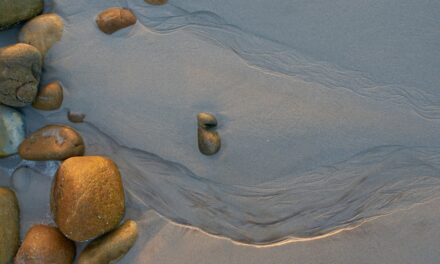Jean-Étienne Liotard was born in 1702 in Geneva, Switzerland, into a family of artists. His father, a painter, undoubtedly influenced his early inclinations towards the visual arts. Growing up in a culturally rich environment, Liotard was exposed to various artistic traditions that would later inform his unique style.
His formative years were marked by a keen interest in drawing, which he pursued with fervour. By the age of 14, he had already begun formal training under the tutelage of his father, who instilled in him the foundational skills of painting and drawing. Liotard’s education extended beyond the confines of Geneva.
In pursuit of broader artistic knowledge, he travelled to Paris, where he encountered the works of prominent artists of the time. This exposure to the French art scene was pivotal in shaping his artistic sensibilities. He studied under renowned masters and absorbed the techniques prevalent in the French school of painting.
His education was not merely technical; it also encompassed an understanding of the cultural and philosophical currents that were sweeping through Europe during the early 18th century. This blend of rigorous training and cultural immersion laid the groundwork for Liotard’s distinctive approach to art.
Summary
- Liotard was born in Geneva in 1702 and received his early education in Switzerland before studying art in Paris and Italy.
- His artistic style was characterized by meticulous attention to detail and a preference for pastel drawings, which set him apart from his contemporaries.
- Liotard’s extensive travels throughout Europe and the Middle East greatly influenced his work, particularly in his use of exotic costumes and settings.
- He was renowned for his skill in portraiture, particularly in his pastel drawings, which captured the likeness and personality of his subjects with remarkable accuracy.
- Liotard’s impact on European art was significant, as he introduced new techniques and styles that influenced artists across the continent.
Artistic Style and Techniques
The Intimacy of Pastel
Unlike many of his contemporaries who favoured oil paints, Liotard embraced pastels for their immediacy and versatility. This choice not only set him apart but also enabled him to create works that exuded a sense of intimacy and warmth.
A Master of Composition and Colour
In addition to his mastery of pastels, Liotard employed a meticulous approach to composition and colour. He often used a limited palette, focusing on soft hues that enhanced the naturalism of his subjects. His attention to detail was unparalleled; every brushstroke seemed intentional, contributing to the overall harmony of the piece.
A Pioneer of Realism
Liotard’s technique involved layering colours to build depth and dimension, allowing him to render skin tones with an almost lifelike quality. This dedication to realism was a hallmark of his work, making him a significant figure in the evolution of portraiture during the 18th century.
Travels and Influences
Liotard’s artistic journey was profoundly shaped by his travels across Europe and beyond. After establishing himself in Paris, he embarked on extensive journeys that took him to places such as Italy, England, and even the Ottoman Empire. Each destination enriched his artistic vocabulary and exposed him to diverse cultural influences.
In Italy, he encountered the grandeur of Renaissance art, which inspired him to explore new themes and techniques. The vibrant colours and dramatic compositions of Italian masters left an indelible mark on his work. His time in the Ottoman Empire was particularly transformative.
The exotic landscapes, intricate patterns, and rich textiles he encountered there influenced not only his subject matter but also his stylistic choices. Liotard’s fascination with Eastern aesthetics is evident in many of his works, where he often incorporated elements such as elaborate costumes and ornate backgrounds. This cross-cultural exchange broadened his artistic horizons and allowed him to create a body of work that was both unique and reflective of a global perspective.
Portraiture and Pastel Drawings
Liotard’s reputation as a portraitist is well-deserved, as he captured the essence of his subjects with remarkable precision. His portraits are characterised by their psychological depth; he had an uncanny ability to convey the personality and emotions of those he painted. Unlike many portraitists who focused solely on physical likeness, Liotard sought to reveal the inner life of his subjects through subtle expressions and gestures.
This approach set him apart from his contemporaries and established him as a master of psychological portraiture. His pastel drawings are particularly noteworthy for their exquisite detail and vibrant colouration. Liotard often employed a technique known as “pouncing,” which involved transferring outlines onto paper before applying pastels.
This method allowed him to achieve a level of accuracy that was essential for capturing the nuances of facial features and textures. The softness of pastels lent an ethereal quality to his portraits, making them feel alive and engaging. Each work is a testament to his skill and dedication, showcasing not only his technical prowess but also his deep understanding of human nature.
Liotard’s Impact on European Art
Liotard’s influence on European art cannot be overstated. His innovative use of pastels and commitment to realism paved the way for future generations of artists who sought to explore similar themes. He played a crucial role in elevating pastel as a legitimate medium for fine art, demonstrating its potential for creating intricate and lifelike representations.
As a result, many artists began to experiment with pastels in their own work, leading to a resurgence of interest in this medium throughout Europe. Moreover, Liotard’s focus on psychological depth in portraiture inspired subsequent artists to delve deeper into the emotional lives of their subjects. His ability to capture fleeting expressions and subtle nuances encouraged others to adopt a more introspective approach to portrait painting.
The legacy of Liotard can be seen in the works of later artists such as Jean-Auguste-Dominique Ingres and Édouard Manet, who drew upon his techniques while developing their own distinctive styles.
Patronage and Commissions
Throughout his career, Liotard enjoyed considerable patronage from various members of European high society. His reputation as a portraitist attracted commissions from aristocrats, diplomats, and wealthy merchants who sought to immortalise themselves or their families through his artistry. These commissions not only provided him with financial stability but also allowed him to engage with influential figures across Europe.
Liotard’s ability to cater to the tastes and preferences of his patrons was instrumental in securing his position within elite circles. He often tailored his compositions to reflect the status and personality of his subjects, ensuring that each portrait resonated with its intended audience. This adaptability made him a sought-after artist during his lifetime, as clients appreciated both his technical skill and his capacity for capturing their individuality.
Liotard’s Legacy and Influence
The legacy of Jean-Étienne Liotard extends far beyond his lifetime; it continues to resonate within the art world today. His pioneering use of pastels has inspired countless artists who have sought to explore this medium’s potential for expression and detail. The techniques he developed have been studied and emulated by generations of artists, ensuring that his contributions to the field are not forgotten.
Furthermore, Liotard’s emphasis on psychological depth in portraiture has left an enduring mark on the genre itself. His ability to convey emotion through subtle gestures and expressions has influenced how portraitists approach their subjects even in contemporary art. The exploration of identity and inner life that Liotard championed remains relevant today, as artists continue to grapple with similar themes in their work.
The Controversial Aspects of Liotard’s Work
Despite his acclaim, Liotard’s work has not been without controversy. Some critics have argued that his focus on realism can verge on hyperrealism, leading to accusations that he sacrifices emotional depth for technical precision. This tension between technique and expression has sparked debates among art historians regarding the true nature of artistic merit.
Additionally, Liotard’s depictions of women have drawn scrutiny over time. While he is celebrated for capturing their beauty with sensitivity, some argue that his portrayals can be seen as objectifying or overly idealised. This duality presents an intriguing aspect of Liotard’s oeuvre; while he undoubtedly elevated portraiture through his skillful rendering, questions about representation and gender dynamics remain pertinent in discussions about his work.
Liotard’s Reception in Different European Countries
Liotard’s reception varied significantly across Europe during his lifetime and beyond. In France, where he spent much of his career, he was celebrated as one of the leading portraitists of his time. His innovative techniques garnered admiration from both critics and collectors alike, solidifying his status within the French art scene.
In contrast, Liotard’s work received mixed reviews in England and other parts of Europe. While some British patrons appreciated his unique style and commissioned portraits, others found it difficult to reconcile his approach with prevailing artistic norms. This divergence in reception highlights the complexities surrounding artistic taste during the 18th century and underscores how cultural contexts can shape perceptions of an artist’s work.
Liotard’s Later Years and Final Works
As Liotard entered his later years, he continued to produce remarkable works that reflected both personal evolution and artistic maturity. His later portraits often exhibited a greater sense of introspection; he seemed increasingly interested in exploring themes related to identity and self-perception. This shift is evident in several notable pieces created during this period, where he delved into more complex narratives surrounding his subjects.
Despite facing challenges related to changing artistic trends and tastes, Liotard remained committed to his craft until the end of his life. His final works demonstrate an unwavering dedication to realism while also hinting at an awareness of emerging movements within European art. This adaptability speaks volumes about Liotard’s character as an artist; rather than conforming entirely to contemporary trends, he sought ways to integrate new ideas while remaining true to his own vision.
The Rediscovery of Liotard’s Art
In recent years, there has been a resurgence of interest in Jean-Étienne Liotard’s work among art historians and collectors alike. Exhibitions dedicated solely to his oeuvre have emerged across Europe, showcasing not only his most famous portraits but also lesser-known pieces that highlight the breadth of his talent. This rediscovery has prompted renewed discussions about Liotard’s contributions to art history and has led many to reassess his place within the canon.
The revival of interest in pastels as a medium has further contributed to this renaissance surrounding Liotard’s work. As contemporary artists explore new ways to engage with traditional materials, they often look back at pioneers like Liotard for inspiration. This cyclical nature of artistic appreciation ensures that Jean-Étienne Liotard will continue to be celebrated not only for his technical prowess but also for the profound impact he had on European art as a whole.
For those interested in exploring different techniques in portraiture, a related article worth checking out is “Mixed Media Portraits: Layering Paint, Paper, and Text”. This article delves into the creative process of combining various materials to create unique and textured portraits, offering valuable insights for artists looking to experiment with mixed media. Jean-Étienne Liotard’s meticulous attention to detail and use of different mediums in his portraits could serve as inspiration for those wanting to push the boundaries of traditional portraiture.


